I'm sure that angle of stances changes during application. Just like horse stance will change when in application.If you want to be precise, his back foot should point 45 degree forward.
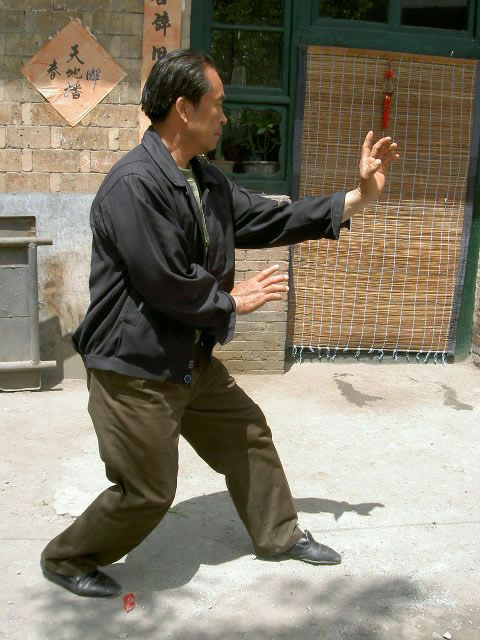
Navigation
Install the app
How to install the app on iOS
Follow along with the video below to see how to install our site as a web app on your home screen.
Note: This feature may not be available in some browsers.
More options
Style variation
You are using an out of date browser. It may not display this or other websites correctly.
You should upgrade or use an alternative browser.
You should upgrade or use an alternative browser.
Aikido.. The reality?
- Thread starter JowGaWolf
- Start date
- Status
- Not open for further replies.
It's the XingYi 3-7 stance.Not sure of the relevance. This does't look like aikido or fencing. Looks like southern Chinese boxing, or maybe Hsing-i? Obviously some of the cool stuff you've encountered over the years, John. What is it ...and where did you take the picture?
The best fighting stance is a stance that you can spring forward from that posture,
So if your back foot is pointing
- 45 degree forward, your body will spring forward.
- 90 degree (as shown in the fencing stance), your body will spring side way (that's not what you want to).
In this pictures, his back foot is pointing 45 degree backward. When he springs, I have no idea which direction that his body will spring to. In other words, his stance is not a spring-able stance.
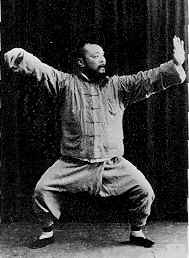
You'll get the quickest push forward with the foot at 90 degree.- 90 degree (as shown in the fencing stance), your body will spring side way (that's not what you want to).
It's not just fencing, you'll also see it in boxing.
Jow Ga low stance. If I want to be mobile in this stance then my rear foot is at 90 read to push forward quickly. My lead foot is "gate closed" but when I move it will change position to "gate open" with the toes pointing forward.
But I think 45 degrees is a compromise between 90 degrees and angle cutting which is often used for used for kicking. Here my foot is at 45 degrees.
my footwork again

This is a special front kick that I do. Take a note the position of my feet.

I'm not saying that there is 90 degrees is the only way. I personally think both ore equally important an I use both equally well. In application you will see people actually use both
This is a special front kick that I do. Take a note the position of my feet.
I'm not saying that there is 90 degrees is the only way. I personally think both ore equally important an I use both equally well. In application you will see people actually use both
I'm not sure what you mean when you say a 90-degree stance will result in springing sideways. I move through a 90-degree stance a lot, including at times when moving forward quickly.It's the XingYi 3-7 stance.
The best fighting stance is a stance that you can spring forward from that posture,
So if your back foot is pointing
- 45 degree forward, your body will spring forward.
- 90 degree (as shown in the fencing stance), your body will spring side way (that's not what you want to).
In this pictures, his back foot is pointing 45 degree backward. When he springs, I have no idea which direction that his body will spring to. In other words, his stance is not a spring-able stance.

drop bear
Sr. Grandmaster
The stances are probably universal stance for systems that use punching and or kicking. The only place that I don't see a lot of it is wrestling where they tend to point both feet forward.
Traditional boxing is both feet forward as well.
Steve
Mostly Harmless
I really like what you say about testing function. But I don't understand how you can suggest that it's the guy in that video who is uninterested in function, and who rejects exploration of techniques. That's surprising to me.In all honesty I think the evidence is that.
1. HE doesn't know
2. HE doesn't understand the functionality of fighting in general
3. He doesn't understand the function of what he trains.
It says more about him than about systems. He could have used functional reference points then test them out with an Aikido perspective. Compare what I've written with trying to analyze a "Chop", a stance, and a Forearm. Between me and him, I've probably added more possible insight for Aikido than what he has added in all of his videos. His biggest problem is that he's still new to sparring. You can clearly see that when he spars against people, his foot work tells oh him, his body movement tells on him. His lack of interest of being hit even with light punches tell on him as he tries to dodge every punch.
There's definitely a Trend, but I think it's a trend that people who don't understand stand the system that they train in, probably:
I'll tell you this much if I crack "The Aikido Code" and learn how to successfully do a Aikido technique, then I'm going post a video response back to him. Titled "If I can figure this out, then why can't you." He talks about testing beliefs. I can tell you for a fact that I've never once tested my Jow Ga beliefs. I think a person that "Tests beliefs" is going to gain less than a person who sets out to understand function and then "Test Function" to see if they understood correctly.
- Haven't looked
- Haven't sparred
- and have a general misunderstanding of what fighting looks like or what fighting spirit is.
Think of it this way. Where would we be if we just assume that just because it didn't work for some that there was no validity in trying to fly. How many failures were made, but people still believed that they could fly. But where they testing belief or testing function?
So what fits your thoughts when looking at the video below.
- It doesn't work for me, so it must not be possible
- It doesn't work because they lack the understanding.
Martial arts are just like this. 90% of the time is will be your lack of knowledge of how something works, that will make you think "it's impossible" or that "it doesn't work."
My personal thoughts on Aikido is that Aikido is a flying machine. The people in the video are Aikido Practitioners who don't understand what's needed to in order to actually fly. Their idea or concept of a flying machine with flapping wings is sound. The techniques used to accomplish that are the wrong technique because they failed to understand flying.
(0:06) in the video above. Machines that fly by using flapping wings. The reality. video below. You can clearly see the different levels of understanding.
Sometimes the system is at fault. But I think a lot of times, it's our lack of understanding that causes us to do things incorrectly
As you explore Aikido, something has come up as an undercurrent in this thread, and has come up before in threads about Aikido in particular. It's simply that the secret to making Aikido work is to start by already being a competent fighter. In the past, this has been acknowledged by people who trained in Aikido. Point is, maybe the thing most Aikidoka are missing is a prerequisite expertise in one or more other styles, like Judo, BJJ, MMA, Wrestling, Sambo, Savatte, etc.
There's another element at play here, which is that the training model is intrinsic to some styles. Question being, if you train Aikido techniques in an MMA gym, and you actually solve the puzzle you're currently working on, which is to get one or more Aikido techniques to function as designed... is it still Aikido at that point? What I mean is, at this point, are you training Aikido, or are you poaching a technique from Aikido for use in your MMA (or some other style) training?
If you want to spring forward at any moment as fast as you can, with your back foot pointing 45 degree forward can help a lot.I'm not sure what you mean when you say a 90-degree stance will result in springing sideways. I move through a 90-degree stance a lot, including at times when moving forward quickly.
If you have to turn your back foot and then spring, that's 2 steps process. 1 is better than 1,2 .
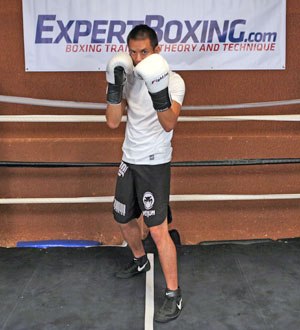
Last edited:
This is why the wrestler's single leg is so fast. They are already in the best forward spring fighting stance.The stances are probably universal stance for systems that use punching and or kicking. The only place that I don't see a lot of it is wrestling where they tend to point both feet forward.
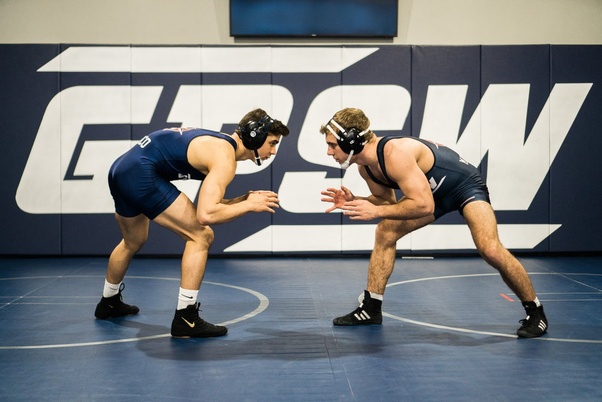
Last edited:
Thanks. now we know theTraditional boxing is both feet forward as well.
It's because of how he explored his Aikido. If there are 10 layers of exploring one's fighting system. I would say that he only went to level 1 or 2. That type of exploration is just on the surface.But I don't understand how you can suggest that it's the guy in that video who is uninterested in function, and who rejects exploration of techniques. That's surprising to me.
What I'm doing right now is probably a level 3 or 4. Where the goal is to understand the techniques, not if they work or how they work but to identify possibilities and benefits of that technique. All of this is before you get to the half way mark and sparring. From what I can tell his main problem seems to be "trying to get to the goal to quickly" Sometimes things have to sit and "bake in the brain for a bit." I know what it's like when I started exploring function in Kung Fu and I've seen other's do the same and it takes a long time, especially if you don't have a good road map that helps you understand the function.
Here's an example: We are talking about Aiko. Where did I start? Not with some wrist lock, but some simple concepts.
1. How does Aikido stand
2. Whats the benefit and disadvantage of standing like that.
3. I took a look at the "Aikido chop" and tried to understand what it was being used for. Was it a real strike? Can it be a real strike? In the process of that I saw a difference in how people move their feat or use their forearms. I started noticing differences.
4. I took a look of exercises to see how they were warming up and to get an idea of what parts of the body they are getting into shape.
I listen to how other people explain it. What are the differences and what are the similarities. The fact that he asked BJJ to see if they can "make the techniques work" pretty much tells me that he didn't explore beyond that 2nd layer.
If you had someone to each you function right away then this wouldnt' be necessary. This is what you need in order to figure stuff out on your own. If you don't have this then you'll start making some really bad assumptions about things. A person who has a better idea of what incoming punches look like will be able to get rid of bad assumptions faster. While someone who has never sparred or has never been punched will make some really bad assumptions. Knowledge builds on knowledge. If your Aikido teacher has never sparred with Aikido and never has been punched, then there's no "Fighting / Application knowledge to build upon."It's simply that the secret to making Aikido work is to start by already being a competent fighter.
I think if the person knows the correct technique, and just goes out and spar with those techniques would be just as fine and it would be a quicker learning process. Because even after you learn BJJ you would still need to go back and learn how to do Aikido from an Aikido mindset and not a BJJ mindset. If Aikido doesn't have you hunched over try to grab your opponents wrist then when you spar you'll need to keep as much of that Aikido structure as possibleAikidoka are missing is a prerequisite expertise in one or more other styles, like Judo, BJJ, MMA, Wrestling, Sambo, Savatte, etc.
Which one of these guys has a structure closer to Aikido? The Aikido practitioner here abandons his structure. The possibility that Aikido will flow from this structure is Zero.
This is the wrist structure that the Aikido guy uses to lock a wrist. This goes back to exploring and understanding what you are doing and understanding the function of the technique.
This is how other Martial Arts System Spread the and lock the wrist. It may not always be close to the body but the spreading of the hand is. When I see the picture above I see someone who lacks understanding and knowledge. A little digging around and he would have found the answer, but he didn't so he walk in with a technique that is done completely wrong in many systems and then he makes the assumption that the Aikido doesn't work. If you try to lock someone's wrist like the way the Aikido person did, then it won't work because that's not to do that wrist lock technique correctly.
Last edited:
I can spring forward without needing to turn that back foot first. There are advantages and disadvantes to the stance, but I don't understand this claimed limitation.If you want to spring forward at any moment as fast as you can, with your back foot pointing 45 degree forward can help a lot.
If you have to turn your back foot and then spring, that's 2 steps process. 1 is better than 1,2 .

I have never seen any Aikido guy who controls his opponent's wrists like this. Sometime I don't think the gate concept (wrist gate, elbow gate, shoulder/head gate) exist in their system. In wrestling, the wrist grabbing is the 1st step. You then move into elbow gate, and then move into shoulder/head gate.
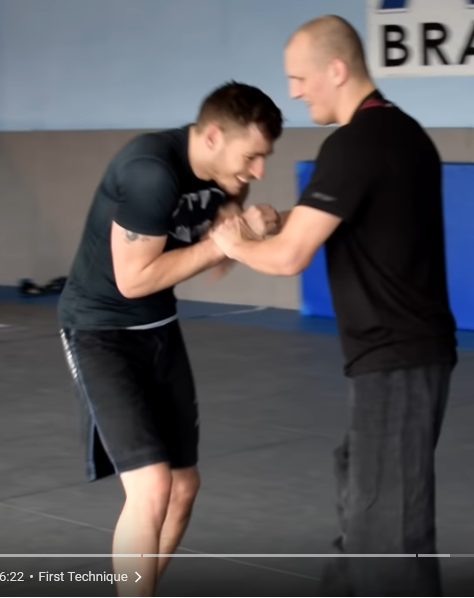
Example to move from the wrist gate into the elbow gate.
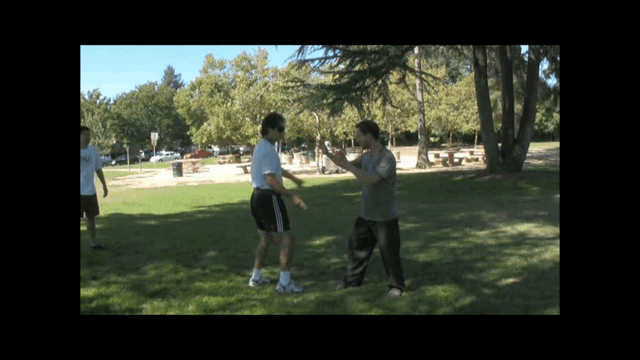
Example to move from the wrist gate into the shoulder gate.
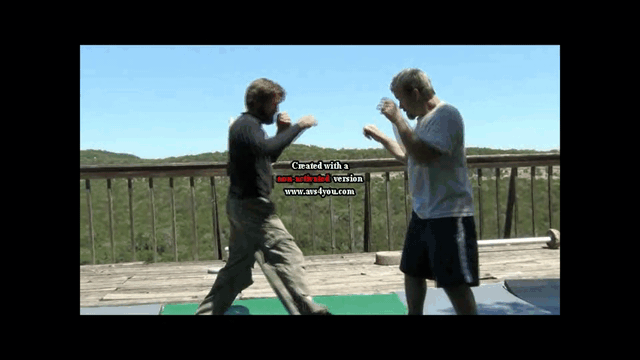

Example to move from the wrist gate into the elbow gate.

Example to move from the wrist gate into the shoulder gate.

I don't have an answer to that. In general it's been my experience that once I figure out how one technique the 2nd technique becomes less difficult to figure out. The hardest part is probably going to be tyring to determine if the Aikido Practitioner is even doing the technique correctly. I've already seen 3 teachers do a technique incorrectly. If people follow that as "As designed by Aikido" then it's not going to work. At that point, I wouldn't even call it Aikido. Just incorrect technique.Question being, if you train Aikido techniques in an MMA gym, and you actually solve the puzzle you're currently working on, which is to get one or more Aikido techniques to function as designed... is it still Aikido at that point?
If it has an incorrect technique then the first step is to fix the errors of the technique that he's trying to do. I'm afraid that I'm going to find a lot of garbage where people are teaching incorrect techniques. I've only looked at 3 things and so far its 1 out of 3 techniques being taught incorrect is going = a lot of garbage because the teacher never took time to actually learn this stuff.What I mean is, at this point, are you training Aikido, or are you poaching a technique from Aikido for use in your MMA (or some other style) training?
For me, I want to make sure I don't "Poach" from other systems.
I probably does exist. If what you are saying is a Universal concept among other grappling systems then I would assume that Aikido would have to follow similar rules. But they would never learn this unless they spar or is coached by someone who understands this.Sometime I don't think the gate concept (wrist gate, elbow gate, shoulder/head gate) exist in their system.
I'm talking about 100% efficiency, With your back foot pointing in 90 degree angle, you may only get 75% efficiency.I can spring forward without needing to turn that back foot first. There are advantages and disadvantes to the stance, but I don't understand this claimed limitation.
So runners, wrestlers, boxers all have their back foot pointing forward. They must have their reason for it. Their reason is they want to spring forward with maximum speed and maximum power.
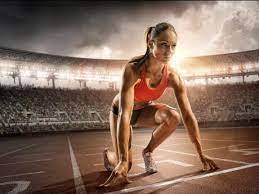


Last edited:
Do Aikido guys use firemen's carry technique?


drop bear
Sr. Grandmaster
Thanks. now we know the
It's because of how he explored his Aikido. If there are 10 layers of exploring one's fighting system. I would say that he only went to level 1 or 2. That type of exploration is just on the surface.
What I'm doing right now is probably a level 3 or 4. Where the goal is to understand the techniques, not if they work or how they work but to identify possibilities and benefits of that technique. All of this is before you get to the half way mark and sparring. From what I can tell his main problem seems to be "trying to get to the goal to quickly" Sometimes things have to sit and "bake in the brain for a bit." I know what it's like when I started exploring function in Kung Fu and I've seen other's do the same and it takes a long time, especially if you don't have a good road map that helps you understand the function.
Here's an example: We are talking about Aiko. Where did I start? Not with some wrist lock, but some simple concepts.
1. How does Aikido stand
2. Whats the benefit and disadvantage of standing like that.
3. I took a look at the "Aikido chop" and tried to understand what it was being used for. Was it a real strike? Can it be a real strike? In the process of that I saw a difference in how people move their feat or use their forearms. I started noticing differences.
4. I took a look of exercises to see how they were warming up and to get an idea of what parts of the body they are getting into shape.
I listen to how other people explain it. What are the differences and what are the similarities. The fact that he asked BJJ to see if they can "make the techniques work" pretty much tells me that he didn't explore beyond that 2nd layer.
If you had someone to each you function right away then this wouldnt' be necessary. This is what you need in order to figure stuff out on your own. If you don't have this then you'll start making some really bad assumptions about things. A person who has a better idea of what incoming punches look like will be able to get rid of bad assumptions faster. While someone who has never sparred or has never been punched will make some really bad assumptions. Knowledge builds on knowledge. If your Aikido teacher has never sparred with Aikido and never has been punched, then there's no "Fighting / Application knowledge to build upon."
I think if the person knows the correct technique, and just goes out and spar with those techniques would be just as fine and it would be a quicker learning process. Because even after you learn BJJ you would still need to go back and learn how to do Aikido from an Aikido mindset and not a BJJ mindset. If Aikido doesn't have you hunched over try to grab your opponents wrist then when you spar you'll need to keep as much of that Aikido structure as possible
Which one of these guys has a structure closer to Aikido? The Aikido practitioner here abandons his structure. The possibility that Aikido will flow from this structure is Zero.
View attachment 23775
This is the wrist structure that the Aikido guy uses to lock a wrist. This goes back to exploring and understanding what you are doing and understanding the function of the technique.
View attachment 23776
This is how other Martial Arts System Spread the and lock the wrist. It may not always be close to the body but the spreading of the hand is. When I see the picture above I see someone who lacks understanding and knowledge. A little digging around and he would have found the answer, but he didn't so he walk in with a technique that is done completely wrong in many systems and then he makes the assumption that the Aikido doesn't work. If you try to lock someone's wrist like the way the Aikido person did, then it won't work because that's not to do that wrist lock technique correctly.
View attachment 23777
It is prettying interesting that apparently nobody could make the system work though.
I mean we can always support explanations with more explanations. There is an infinite amount of bullcrap an only so many facts.
Last edited:
drop bear
Sr. Grandmaster
I really like what you say about testing function. But I don't understand how you can suggest that it's the guy in that video who is uninterested in function, and who rejects exploration of techniques. That's surprising to me.
As you explore Aikido, something has come up as an undercurrent in this thread, and has come up before in threads about Aikido in particular. It's simply that the secret to making Aikido work is to start by already being a competent fighter. In the past, this has been acknowledged by people who trained in Aikido. Point is, maybe the thing most Aikidoka are missing is a prerequisite expertise in one or more other styles, like Judo, BJJ, MMA, Wrestling, Sambo, Savatte, etc.
There's another element at play here, which is that the training model is intrinsic to some styles. Question being, if you train Aikido techniques in an MMA gym, and you actually solve the puzzle you're currently working on, which is to get one or more Aikido techniques to function as designed... is it still Aikido at that point? What I mean is, at this point, are you training Aikido, or are you poaching a technique from Aikido for use in your MMA (or some other style) training?
A style ultimately is a figment of the imagination. Where it stops and starts is purely a decision by someone.
Stylistic consistency is a theology.
Martial D
Senior Master
Exactly that. A style is just someone creating a list of movements and saying. These, and only these.A style ultimately is a figment of the imagination. Where it stops and starts is purely a decision by someone.
Stylistic consistency is a theology.
It's ultimately a self imposed handicap.
- Status
- Not open for further replies.
Similar threads
- Replies
- 46
- Views
- 6K
